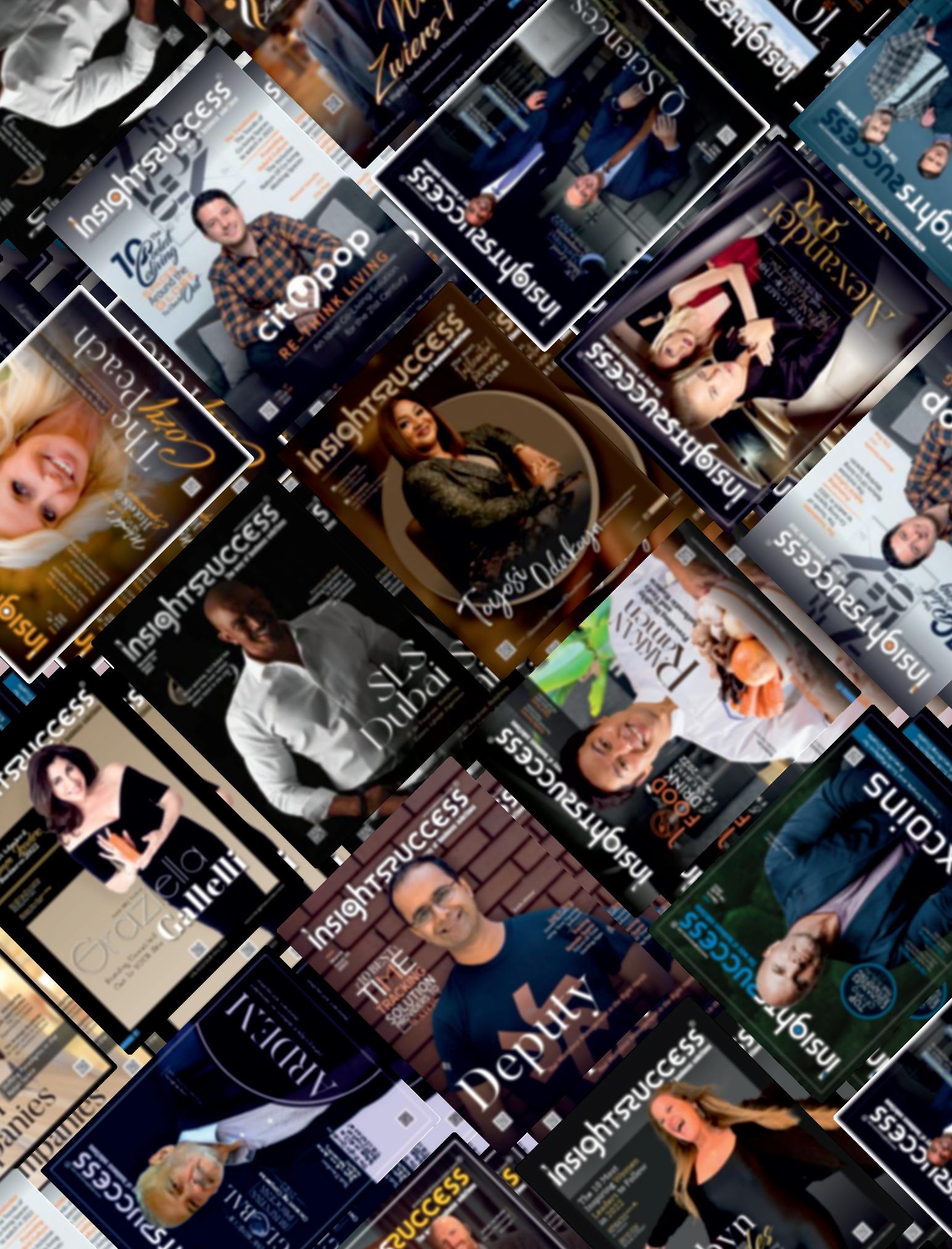



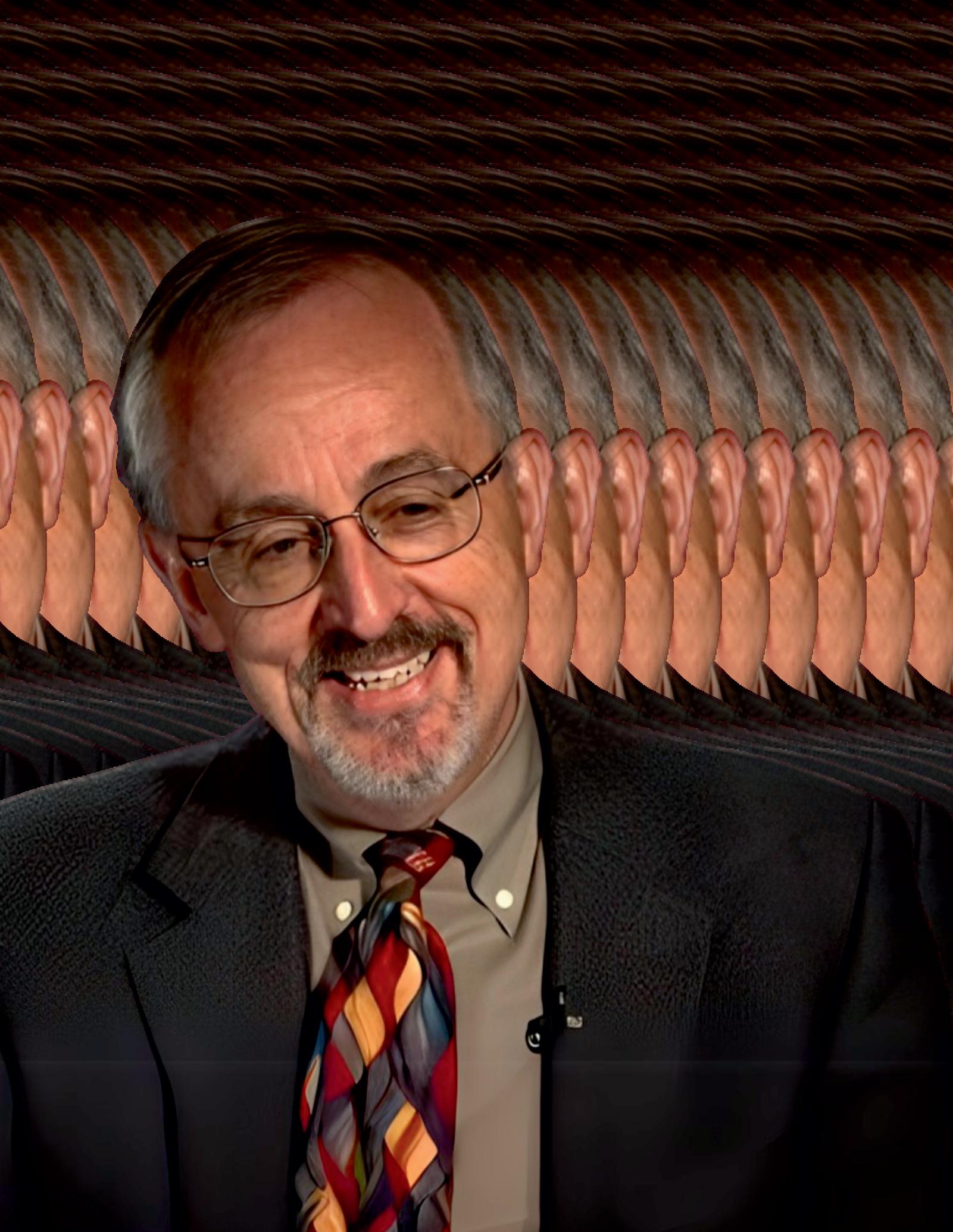
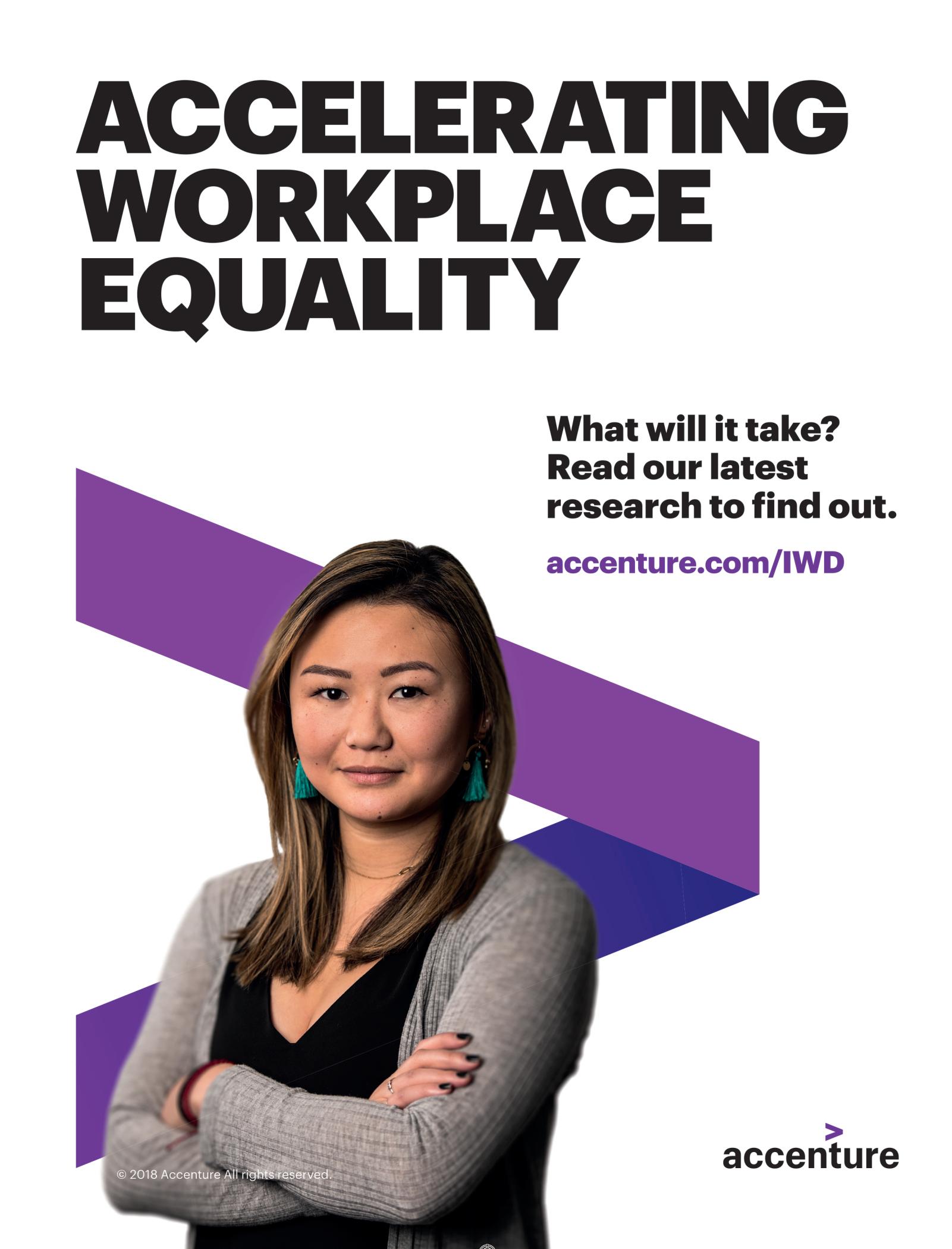











Educationisthecornerstoneofprogress,andin2025,thecall
fortransformationhasneverbeenlouder—ormoreurgent.As societiesevolve,technologiesadvance,andglobalchallenges growmorecomplex,theneedforvisionaryeducatorswhocanlead withinnovation,empathy,andpurposebecomesimperative.
America’s Leading Education Minds Driving Change in 2025 isa tributetotheindividualsreimaginingwhatlearningcanandshouldbe. Thesethoughtleadersarenotconfinedbytraditionalmodels;theyare redefiningclassrooms,reshapingcurricula,championingequity,and bridgingthedividebetweenacademiaandreal-worldimpact.Their contributionsarenotonlyshapingyoungmindsbutalsoinfluencing policy,workforcereadiness,andcommunityempowerment.
AttheheartofthisfeaturestandsDr.RichardC.Larson,apioneer whoseworkcontinuestoresonatefarbeyondthewallsofacademia. WithacareerspanningoverfivedecadesatMIT,Dr.Larson’s groundbreakingeffortsineducationalinnovation,STEMoutreach,and operationsresearchhaveleftanindeliblemarkonthefutureof learning.Whetherthroughhisresearchonlearningtechnologies,his leadershipatMITBLOSSOMS,orhisunwaveringcommitmentto globaleducationaccess,Dr.Larsonexemplifieswhatitmeanstobea changemakerineducation.
Theeducatorshighlightedinthiseditionarenotonlyleaders—theyare architectsofopportunity.Inaworldwhereknowledgeispower,and accessibilityiskey,theyarebuildinginclusivesystemsdesignedto nurturetalent,sparkcuriosity,andpreparelearnersfortherealitiesof tomorrow.
Theirstoriesoffermorethaninspiration;theyofferblueprintsfor sustainablechange.FromleveragingAIinclassroomstodesigning interdisciplinaryprogramsthattackleglobalissues,theseindividuals arepushingboundariesandrefusingtosettleforoutdatednorms.
Inrecognizingtheseleadingeducationminds,wecelebrateafuture builtonknowledge,integrity,andinnovation.Weinviteyoutoexplore theirjourneys,ideas,andimpact—becausethefutureofeducation dependsonboldvisionarieslikethese.
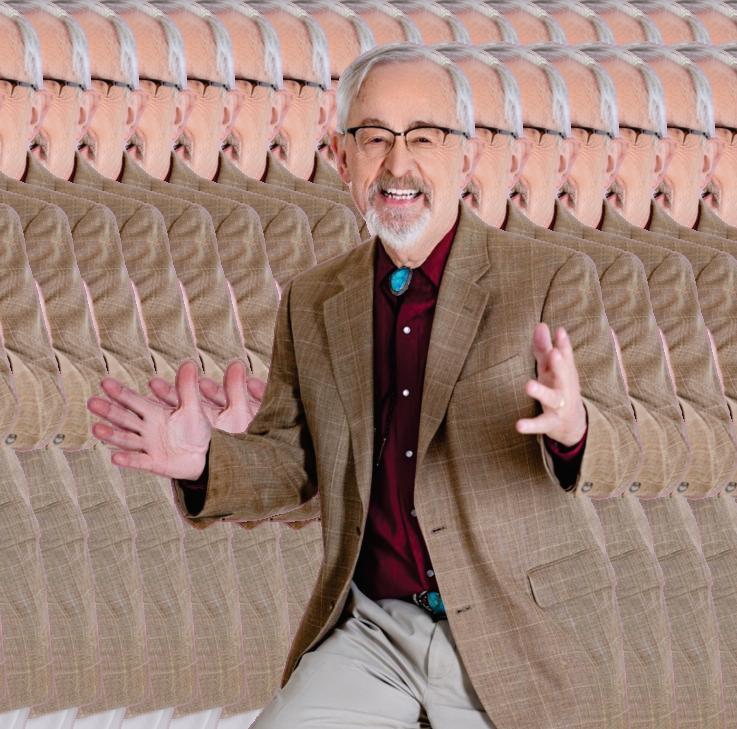
Lifelong Curiosity, Enduring Impact: Richard Larson’s Legacy in Education, Innovation, and Human Progress
Curriculum for the AI Era: The Importance of AI Education in Shaping Tomorrow’s Innovators
Tech-Driven Teaching: The New Frontier in Global Education

Art
Business
Business
Digital
Co-designer
Marketing











Lifelong Curiosity, Enduring Impact:


Legacy in Education, Innovation, and Human Progress












RichardLarson’sstoryisacompellingportraitofwhat itmeanstolivealifefueledbycuriosity,rigor,and an unrelenting drive to elevate others through knowledge. A towering figure in the realms of operations research,education,andappliedinnovation,Richardhasnot only contributed pioneering insights to theoretical frameworksbutalsoreshapedhowknowledgeistransferred andutilizedacrossdisciplinesandcommunities.Hisjourney is emblematic of the idea that learning isn’t confined to classrooms or labs it’s a constant companion in life’s evolution.
Throughout his multifaceted career, Richard has served as a professor,researcher,mentor,andpublicadvocateformodelbasedthinking.Hisworkbridgesthetechnicalandthehuman, theempiricalandtheinspirational.Whethersolvingintricate urban response system problems, founding educational platformslikeMITBLOSSOMS,orwritingbooksthatdistill complexmodelsforeverydaydecision-making,Richardhas alwaysprioritizedaccessibilityandimpact.Hiscontributions resonate far beyond academia, influencing real-world systemsandpeoplealike.

Richard’s academic path began with a blend of promise and pragmatism.
After graduating from Needham High School, he was accepted into MIT, a formative experience that laid the foundation for his life’s work.
Equally important is the human story behind the achievements.Thepartnershipandenduringlovesharedwith hislatewife,MaryElizabethMurray(“Liz”),addeddepthand purpose to his professional endeavors Their shared dedication to educational equity helped define their joint legacy. Even after retirement, Richard continues to inspire newgenerationsthroughthoughtleadership,hiswriting,and speaking engagements, proving that the pursuit of knowledge, when rooted in purpose, becomes a powerful forceforgood.
Richard’s academic path began with a blend of promise and pragmatism.AftergraduatingfromNeedhamHighSchool,he was accepted into MIT, a formative experience that laid the foundationforhislife’swork.Thoughhisfatherhadhopedhe would live at home to cut costs, Richard joined Phi Beta Epsilon (PBE), a unique MIT fraternity located directly on campus.Thisdecisionnotonlyprovidedconveniencebutalso enveloped him in a community that nurtured intellectual growthandpersonalfriendshipsthatwouldlastalifetime.
As his interest in systems and analytical problem-solving matured,RichardcontinuedhiseducationatMIT,ultimately earningaPhDinOperationsResearch.Itwasduringthistime


















Richard thrived in academia.
Rising through the ranks, he secured tenure and developed an identity not just as a scholar, but as a builder of intellectual communities.
that his trajectory took an unexpected turn Nearing completionofhisdissertation,hisadvisor,ProfessorAlvinW. Drake, offered him a faculty position. Initially uncertain of whether he was ready to transition from student to professor—what he calls the “Groucho Marx syndrome” —Richard ultimately accepted the role. That leap of faith markedthebeginningofalifelongcommitmenttoMITandto advancingknowledgethroughbothresearchandeducation.
In the ensuing years, Richard thrived in academia. Rising through the ranks, he secured tenure and developed an identity not just as a scholar, but as a builder of intellectual communities.HisdedicationtoMITneverwaned,evenashis career evolved in ways he couldn’t have foreseen during his undergraduatedays.
OfalltherolesRichardhasembraced,teachingstandsoutas the most personally fulfilling. While lecturing provided a sense of accomplishment, it was through deeper academic relationships that his greatest joy emerged Mentoring graduatestudentsandadvisingdoctoralcandidatescreateda two-way learning process that fostered innovation and community.Richardbelievesthat“teachingisnotjustabout conveying information; it’s about inspiring curiosity and criticalthought.”
Forhim,mentoringwaslessaboutinstructionandmoreabout mutual exploration. He recalls numerous instances where
collaborative research with students led to groundbreaking publications. The excitement of seeing students evolve into respected thought leaders and researchers reaffirmed his belief in the transformative power of education Each student’s success became a reflection of the culture of excellenceandinquiryhehelpednurture.
Richard’s mentorship extended beyond technical competence. He encouraged students to adopt a broad intellectual perspective, to question assumptions, and to remainopentointerdisciplinaryapproaches.Hisinfluenceas a teacher continues to ripple outward through the careers of thoseheguided,alastingtestamenttothekindofeducatorhe hasalwaysstrivedtobe.
Even after stepping away from full-time academia, Richard remained focused on democratizing knowledge. Central to this post-retirement mission has been his book MODEL THINKING For Everyday Life, which captures his philosophy that conceptual models are critical tools for decision-makingacrossallaspectsofhumanexperience.By





distilling complex systems into understandable frameworks, heseekstomakeproblem-solvingskillswidelyaccessible.
Richard'scommitmenttoaccessibilitywasalsoevidentinhis workwiththeMITBLOSSOMSproject,co-developedwith hiswifeLiz.Thisinitiativeprovidedfree,high-qualityvideo lessons to secondary schools around the world, helping to bridge educational gaps in underserved communities. His work emphasized that effective education should not be confined to elite universities—it should reach every student withthepotentialtogrow
ThisoutreachmindsetmarksadistinctivefeatureofRichard’s legacy Hehasconsistentlypushedagainsttheboundariesof traditional academia, arguing that real-world challenges demandinterdisciplinaryapproachesandpublicengagement. His efforts exemplify the belief that true innovation occurs whenknowledgeisfreelysharedandcollaborativelyrefined.
For Richard, learning is not a phase—it’s a way of life. He ofteninvokesEinstein’ssentiment:“Adaywithoutlearningis adaywasted.”Tohim,curiosityisahabit,onethatsharpens theintellectandenrichesthespirit.Thisethoshasfueledhis lifelong journey, from academic research to practical problem-solving.
He recounts episodes where breakthroughs came to him not throughdeliberateeffort,butthroughdreams—atestamentto

Richard’s mentorship extended beyond technical competence. He encouraged students to adopt a broad intellectual perspective, to question assumptions, and to remain open to interdisciplinary approaches.
howdeeplyingrainedhiscognitiveengagementis.Onatleast two occasions, Richard found solutions to longstanding research questions while asleep. One such dream led to the development of the Hypercube Queueing Model, a revolutionarytoolforoptimizingemergencyservicesystems inurbanenvironments.
These moments reflect not only his ingenuity but also his profoundtrustinthemind’scapacitytoworkevenatrest.For Richard,theactoflearningisasmuchaboutbeingreceptive toinsightasitisaboutconsciousstudy Hebelieveseveryone possesses this potential—if only they commit to continuous learningwithgenuinecuriosity.
Richardhaslongchampionedtheideathatqualityeducation shouldbeauniversalright,notaprivilegedopportunity.His support for Notre Dame Cristo Rey High School and his establishmentoftheLarsonFacultyChairinMIT’sInstitute forData,Systems,andSocietyreflectthisconviction.These initiatives are driven by a vision of academic excellence marriedtosocialimpact.

















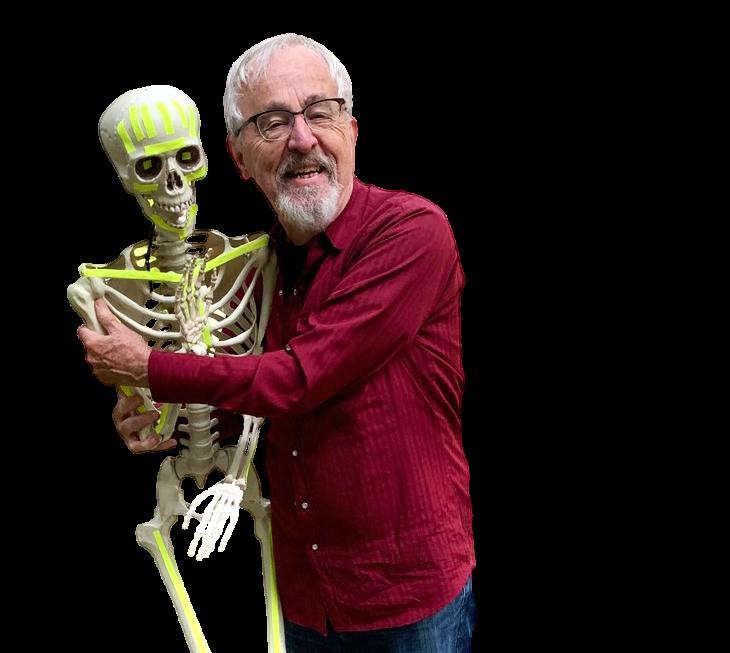

Though my father had hoped i would live at home to cut costs, I joined Phi Beta Epsilon (PBE), a unique MIT fraternity located directly on campus.
Through the endowed chair, he ensures that future generations of scholars will continue to explore complex, systemic challenges with rigor and innovation His philanthropy echoes his belief that the pursuit of knowledge should be sustainable and that institutions must cultivate environmentswheretransformativeideascanflourish.
Sucheffortsgobeyondcharity—theyrepresentaninvestment insociety’sintellectualinfrastructure.Richardseeseducation as a catalyst for social mobility and societal betterment, a belief that continues to guide his engagements long after formalretirement.
Richard’s journey has not been without moments of vulnerability Hecandidlysharesanexperienceasagraduate Teaching Assistant when a student’s question exposed his own incomplete understanding of a topic. That humbling incidentpromptedhimtoadoptanewlevelofpreparationand discipline,whichbecamecentraltohisteachingpractice.
Ratherthanbeingdiscouraged,heusedtheepisodetodevelop a lifelong commitment to clarity, precision, and humility in education.It’salessonheoftenshareswithstudents:mistakes are not failures, but opportunities for growth. This mindset has been instrumental in his continued excellence as both a teacherandthinker
For Richard, excellence is not about being infallible—it’s aboutbeingprepared,opentolearning,andwillingtoevolve.
Thatphilosophycontinuestoresonateinhisprofessionaland personallife.
IntegraltoRichard’sjourneywastheunwaveringsupportand partnershipofhiswife,MaryElizabethMurray(“Liz”).Their marriagewasmarkedbymutualrespect,collaboration,anda shareddevotiontoeducationalequity.Liz’sleadershipinthe BLOSSOMS initiative and involvement in Richard’s consultingfirm,ENFORTHCorp.,madeherafullpartnerin hisacademicandprofessionallife.
They traveled extensively, championing educational models in diverse settings, including a memorable event in Saudi Arabia where Liz addressed a large audience with poise and passion. Her presence not only grounded Richard but also elevatedhiswork.Herpassingleftanimmeasurablevoid,but her spirit remains woven into the fabric of their shared contributions.
Their story reminds us that intellectual pursuits are most meaningful when they’re grounded in love, partnership, and shared purpose.Together, they demonstrated how education canbecomeafamilymission,onethatextendsacrossborders andgenerations.
Richardremainsactivelyengagedinconversationsaboutthe evolving landscape of research and pedagogy. He is particularlyintrigued—andconcerned—bytheriseof







Artificial Intelligence in educational settings While recognizing AI’s immense potential, he worries about its misuse,especiallywhenstudentsrelyonittobypassgenuine intellectualengagement.
Nonetheless,heremainshopeful.Richardbelievesthatwhile machines may process information, it is human insight that givesitmeaning.Assuch,hechampionsamodelofeducation thatbalancestechnologicaltoolswithtimelessvalues:critical thinking,ethicalreasoning,andimaginativeexploration.
For him, the future of education lies in harmonizing innovationwithintegrity,ensuringthatthenextgenerationof learners is both equipped and inspired to navigate the complexitiesofourworld.
Askedwhatguidancehewouldoffertofutureeducatorsand researchers,Richardrespondswithheartfeltclarity:“Follow your learning passions.” He urges young minds to resist the
For Richard, learning is not a phase—it’s a way of life. He often invokes Einstein’s sentiment: “A day without learning is a day wasted.”
To him, curiosity is a habit, one that sharpens the intellect and enriches the spirit.

pressure of conformity and instead pursue ideas that ignite their curiosity His career, marked by breakthrough models liketheHypercubeQueueingModelandtheQueueInference Engine,exemplifieswhatcanemergewhenoneisdrivenby authenticintellectualinquiry
Headvisesaspiringscholarstoengagedeeplywithreal-world problems, think across disciplinary boundaries, and share theirfindingswidely.ForRichard,impactisnotdefinedsolely by academic citations but by the extent to which one’s work informs,empowers,andinspiresothers.
Evennow,ashecontinuestowrite,speak,andreflect,Richard embodies his own message. His is a life shaped by learning, enrichedbypartnership,anddedicatedtohelpingothersthink moreclearly,actmorewisely,andlivemoremeaningfully.







Asartificialintelligence(AI)transformshowwelive, work, and interact, the imperative to embed AI education in mainstream curricula has never been morepressing.Frommedicinetotransport,financetomedia, AIisatthecoreofapervasivetechnologicalrevolution.But beyondcodingandalgorithmsisamuchgreaterimperative: developing a generation which can not only employAI but understand,question,anddefineitsfuture.
TheeraofAIcallsforadeepreconsiderationofwhatstudents learnandhowtheycometolearnit.Schoolsaroundtheworld mustnowmovewithpurposeandintentionalitytoensurethat students are not just digital consumers—but empowered innovators and ethical guardians of a technology that is rapidlybecomingthefoundationforcontemporarysociety.
AI
AI is now no longer something of the distant future, something that exists only in technology laboratories or science fiction. It drives voice assistants, recommendation engines,medicaldiagnosis,autonomouscars,andpredictive analytics. It determines hiring, credit scores, and national security AsAIbecomesdeeplyingrainedinallindustries,the setofskillsneededtocompeteinthisworldisevolvingfast.
For young people entering the workforce over the next decade,AI literacy will be as essential as reading and math. The challenge lies not only in training future developers but also in educating tomorrow’s doctors, designers, marketers, and policymakers to understand how AI impacts their fields—andhowtoharnessitresponsibly
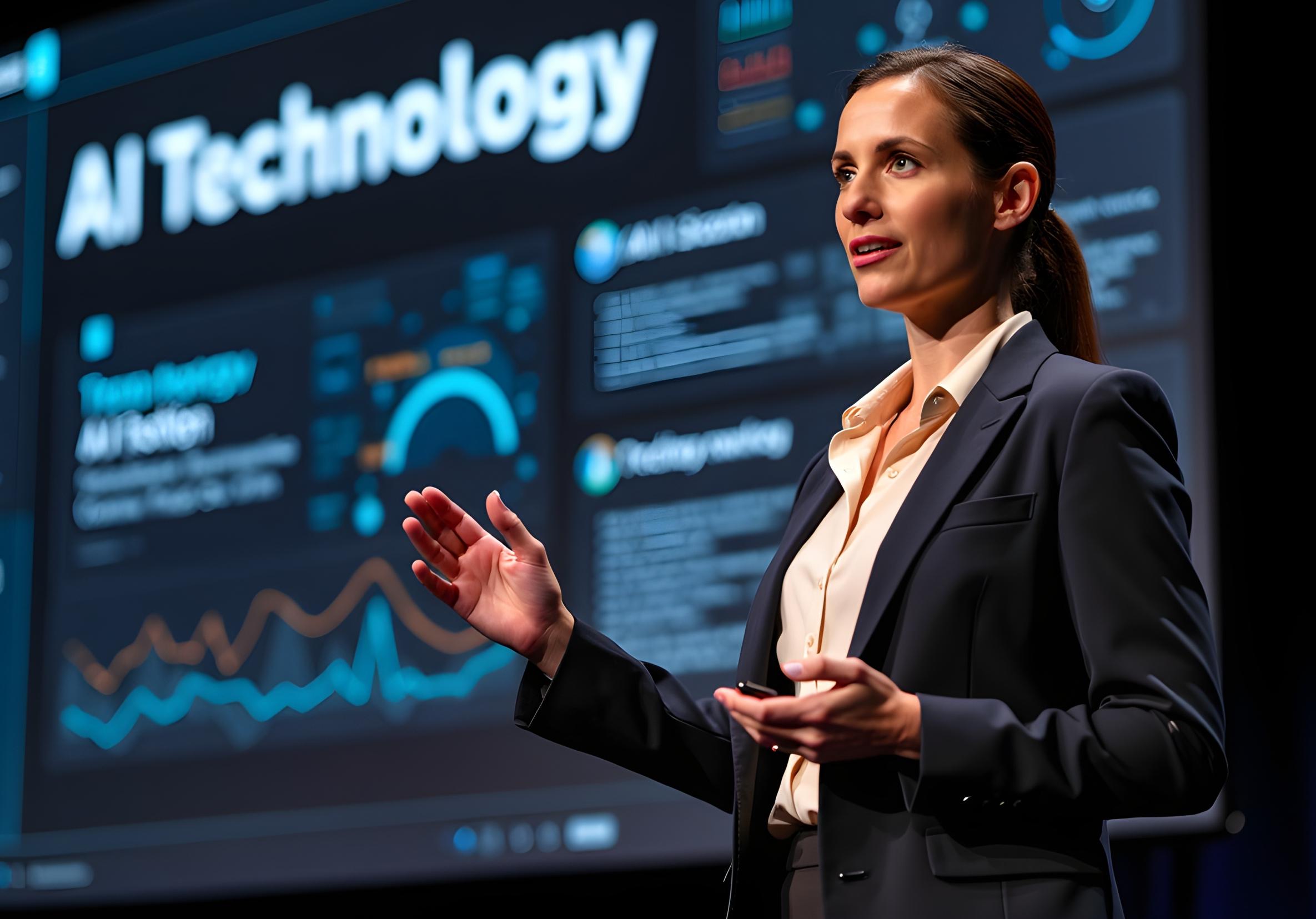
AI learning has to start early. Just as the fundamentals of language, science, and numeracy are taught at the primary schoollevel,thefundamentalsofmachineintelligence,data, logic, and ethical thinking have to be taught. Curricula suitable for the age group can simplify sophisticated

technologies and stimulate curiosity, critical thinking, and problem-solving.
Thisdoesnotequatetoeverylearnerneedingtobeacomputer scientist. Instead, the intention is to createAI literacy as an essential skillset similar to digital or financial literacy—preparingstudentstounderstandAI'splaceintheir
currentandfutureworklives.Knowledgeofhowalgorithms decide, data is employed, and bias might seep in promotes bothtechnicalacumenandcivics.
IntegratingAIeducationisn'tmerelytheadditionofahandful of coding units or robot competitions It needs a transformation at the system level of curriculum design.

Interdisciplinary thinking needs to take center stage, combining computer science with ethics, sociology, mathematics,andthehumanities.
Abroad-basedAIcurriculumneedstoinclude:
• Technical Foundations: Knowledge of data structures, algorithms,andmachinelearningfundamentals.
• Critical Thinking: Sourcing, interpreting, and understandingcorrelationvs.causation.
• EthicsandBias:Investigatingthesocialimplicationsof AI, privacy issues, and the necessity of fairness, accountability,andtransparency
• Human-AI Interaction: Investigating the ways in which humans work with intelligent systems and the role of empathywithintechnologydesign.
Significantly, this change should not be limited to elite universities or high-tech cities Equity should be a fundamental principle in providing AI education across geographies,socioeconomicstatus,andlearningneeds.
TeachersarethekeytosuccessfulAIeducation.Buttoomany teachers themselves are not well-versed in the technologies theyarenowbeingaskedtoteachorimplement.Professional training, hands-on workshops, and collaborative learning spaces are critical to raising educator confidence and capability.
Governments and boards of education need to spend on teacher development, curriculum material, and building infrastructuretobuildastrongAIlearningecosystem.Publicprivate partnerships, in which corporate leaders join hands withhigherlearninginstitutions,canbridgethegapbetween theory and practice and channel AI education into a more practical,dynamic,andfuture-orientedcourse.
InnovationintheClassroom
AIeducationcannolongerbelimitedtotextbooks.Emerging tools are bringing AI concepts to life and making them interesting for students. Virtual labs powered by AI, gamification-based learning, and project-based learning are making theory real. Students are able to train basic neural networks, create chatbots, or model AI decision-making, offeringexperientiallearningthatisevenmoreengaging.
Additionally, AI is improving education in itself. Adaptive learning platforms tailor instruction, detect gaps in learning, and provide instant feedback—enabling learners to advance attheirownspeed.Thesetoolsnotonlyhelpintheteachingof AIbutshowitscapabilityinaction.
Across the globe, nations are waking up to the value of AI education. The UAE, Singapore, Finland, and South Korea are already embracing AI in national education plans. The United Nations and OECD have promoted AI curriculum development and ethics training as part of digital inclusion plansworldwide.
Policy structures need to facilitate this momentum with definitive direction, durable funding, and quantifiable objectives. From updating models of assessment to integrating AI instruction into national curricula, visionary leadershipisneededtomakeAIliteracyscale.
Developing empathy, accountability, and global awareness needs to go hand in hand with technical instruction A generationthatwillnotonlyask"Canwemakethis?"butalso "Shouldwe?"willbebestplacedtocraftafuturewhereAIis withinclusive,equitable,andsustainablevalues.
TheincorporationofAIineducationisnotjustanupgradein technology—itisashiftinphilosophy.Itchallengesteachers, policymakers, and institutions to rethink what it is to get studentsreadyfortomorrow.
ByintegratingAIeducationintoourcurriculanow,wearenot merelyeducatingskills.Weareformingtomorrow'sleaders, innovators,andmoraldesignersofaworldgrowinglyshaped by smart systems. The moment to act is now—because the futurearrivedearlier,anditrequiresmindsthatareprepared, responsible,andresilient.



Tech-Driven Teaching
The face of education is evolving in revolutionary ways—ways that aren't about policy redesign or curriculum reform, but about the incorporation of technology at every point of learning. From student-led classrooms to AI-powered tutoring platforms, tech-driven education is transforming the delivery, acquisition, and application of knowledge worldwide.While nations grapple to overcome learning catch-up and the imperative to ready students for a digital-firstworld, technologynot only served as a tool, but the cornerstone of the future of education worldwide.
No longer limited to chalkboards and textbooks, today's classrooms are fast emerging as dynamic ecosystems where innovation is influencing engagement, personalization, and accessibility. The convergence of cutting-edge technologies such as virtual reality (VR), artificial intelligence (AI), and big data is not only informing the learning process but also transformingtheroleofeducatorsandinstitutions.
Perhaps the most compelling promise of technologysupported instruction is the potential to open up access to quality education. For rural, under-served, or war-torn regions where there is no formal school infrastructure or a lack thereof, technology is a lifeline. Cloud-based learning platforms, mobile applications, and open educational resources(OERs)aredeliveringcurriculum-linkedcontentto millions irrespective of geographic place or socio-economic status.

But access is not sufficient. The actual metric of success is impact—howtechnologyboostslearningresults,elevatesthe level of retention, and develops critical thinking. Adaptive learningapplication,forexample,appliesreal-timeanalytics toalterteachingtomeetspecificstudentneeds,sonostudent gets left behind Teachers can now measure progress accurately, recognize gaps in knowledge in real time, and reactwithtargetedstrategiesthatwerepreviouslyunscalable.

Artificial intelligence is increasingly the foundation of educational reform. AI-based platforms can assess student performance, forecast learning paths, and recommend personalized routes—all while releasing teachers from rote worktoconcentrateonhigher-orderinstruction.Virtualtutors based on natural language processing provide on-demand tutoring, and sentiment analysis can identify frustration or
www.insightssuccessmagazine.com
disengagement in students so that early intervention can be provided.
Additionally, AI makes multilingual content delivery possible,andthelanguageconstraintsnolongerstandinthe way of learning In international classrooms, it is a breakthrough,particularlyformigrantsandforeignstudents. As AI becomes more integrated, its ability to promote inclusivity and diversity in learners will be more profound andlonger-lastingthanever.

Technology isn't displacing teachers—it's redefining their role. Teachers are no longer just knower-bearers but also facilitators, coaches, and curators of content. In the new paradigm, teaching is less about passing on knowledge and more about helping learners navigate discovery, collaboration,andproblem-solving.
Professionaldevelopmentforteachersisimperativetoday.To appropriately address tech-rich classrooms, teachers need to be empowered with digital capability skills, but also with imagination and confidence to try, modify, and innovate. Nations and institutions that are committing to ongoing teachereducationareseeingbenefitsthroughmoremotivated studentsandquantifiablegainsinlearningoutcomes.
Immersive technologies such as Virtual Reality (VR) and Augmented Reality (AR) are giving learning greater depth and dimension. Students are now able to travel to ancient civilizations in the virtual world, perform virtual science experiments, or solve actual engineering problems virtually—allfromtheirhomesorclassrooms.
These technologies close the gap between theory and practical expertise, increasing student motivation and retention Especially in STEM education, where conceptualization can get in the way, VR and AR provide visual, interactive space where learning is intuitive and potent.
Big data analytics is transforming education planning and policy By examining, consolidating huge volumes of data—student performance, attendance, behavioral traits, etc.—governments and institutions can make data-driven choices to enhance instructor support, resource distribution, andcourse.
For policymakers, these facts can guide investment, spur reforms, and monitor country-wide education goals with utmost precision and accountability For school administrators, data dashboards offer real-time insights on schoolperformanceandlearnerprogress.
Though the promise of tech-enhanced learning is deep, it is also paired with the urgent challenge of the digital divide. Disparate access to internet connection, computers, and digitalliteracytrainingisanobstacleformillions,especially low-incomeandruralcommunities.
This calls for a multi-stakeholder response—governments, privatesector,NGOs,andacademiahavetocometogetherto driveinclusiveinfrastructure,affordability,andlocalcontent. InmarketssuchasSub-SaharanAfricaandSouthAsia,where mobilepenetrationishighbutbroadbandpenetrationislow, mobile-firsteducationsolutionsarehavinghugepotential.
Education in the future is definitely international and collaborative. Global cooperation is driving the uptake of EdTech,enablingtheexchangeofknowledge,andscalingup best practice. From UNESCO's digital learning program to public-privateinitiativesspearheadedbytoptechcompanies, there is building pressure to help education systems everywhereprepareforthefuture.
Innovative ecosystems like EdTech clusters in the UAE, India,Singapore,andNordicsaremakingpossiblewhatwas not possible before. These innovation hubs across the globe aredevelopingsolutionsthatarenotjusttechnology-enabled butalsopedagogicallyvalidandcontext-relevant.
Technology-enabled teaching is not longer a fantasy of the future but is reconfiguring learning in the present. With the problems of the world becoming more and more complex, from climate meltdown to robots, the requirement for responsive,open,andproductiveeducationsystemshasnever beenmoreacute.
Thefutureoflearningexistsattheintersectionofinnovation, empathy,andtechnology.It'suptoleaders,policymakers,and educatorstocatchthisshift—notasatrend,butasachangein paradigmthatenableslearnerstoflourishinachangingworld. Together,wecanstarttoensurehigh-qualityeducationisno privilege,butanabsoluteright.








www.insightssuccessmagazine.com






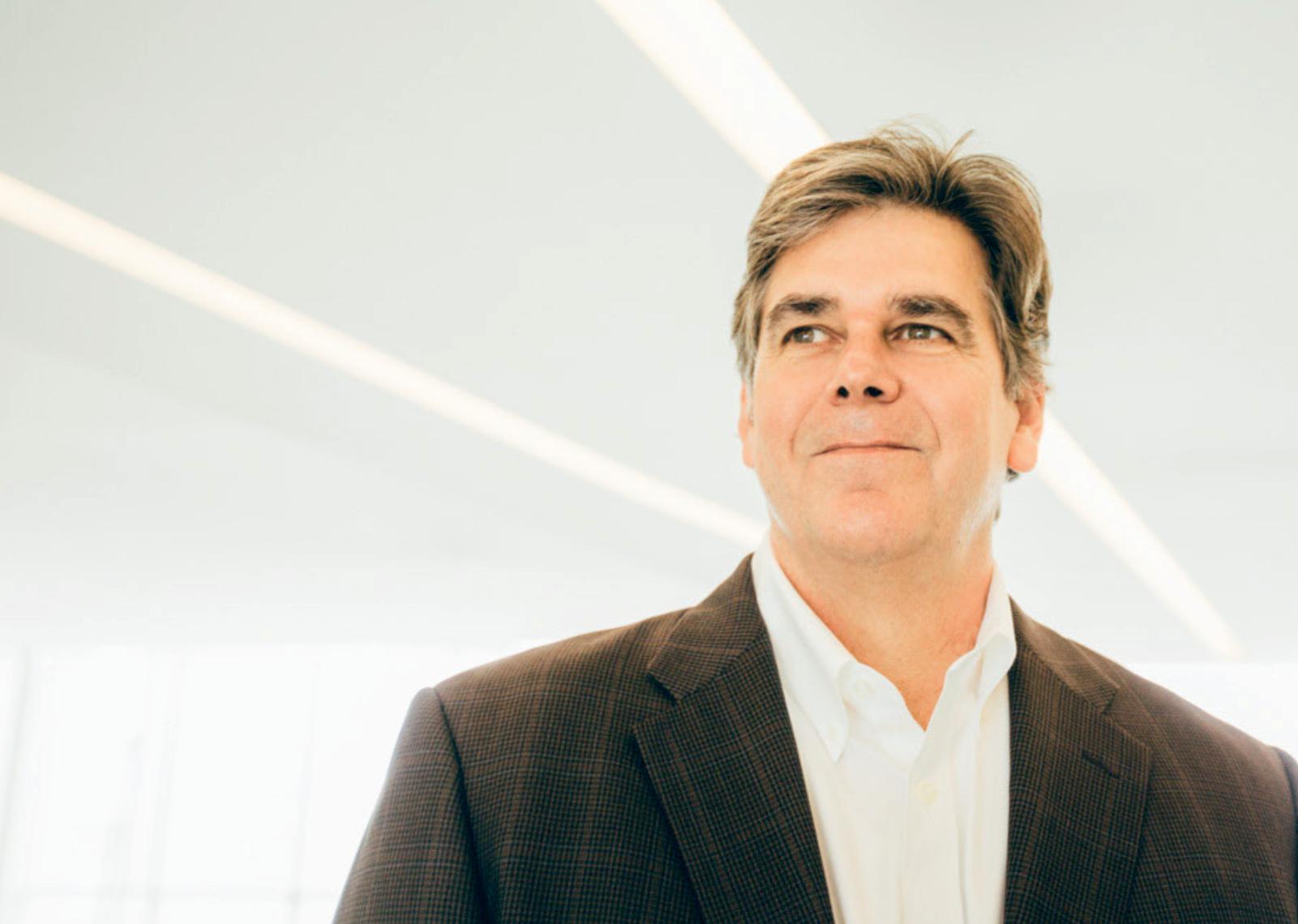




www.insightssuccessmagazine.com
www.x.com/insightssuccess

